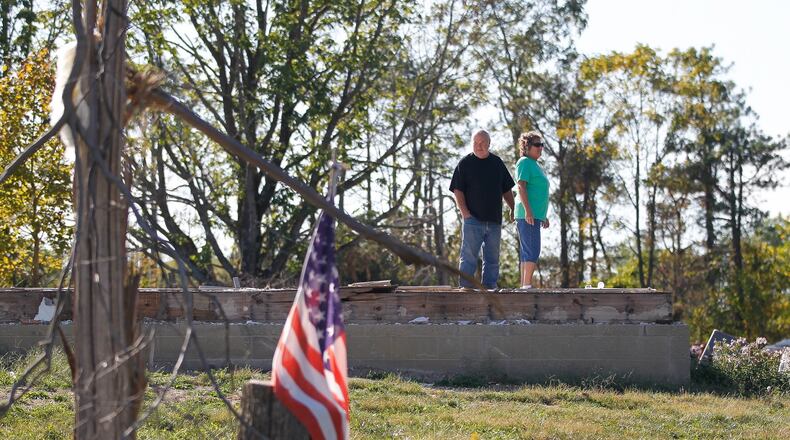MORE: Tornado rebuilding efforts delayed due to coronavirus concerns
But with schools closed, children will also miss out this year on the statewide tornado drill scheduled Wednesday. Cassady said with children home, the 9:50 a.m. drill presents a good time for families to plan what they will do when sirens sound.
“Even at home, you can practice where to go, what materials you might need for a safety preparedness kit, who’s going to grab that, and who’s going to go where,” she said. “It’s a great time to really practice as if there is an actual tornado.”
At best, a family may have only a half hour’s warning that severe weather is on the way. Often just minutes, Cassady said.
“It’s important to remember that as you’re practicing your tornado drill, speed is of the essence,” she said.
Jeff Jordan, director of Montgomery County Emergency Management, also said it’s a good time for families to practice tornado drills but many are also distracted and distressed by the COVID-19 pandemic.
“We also want to remind people to take care of their mental and emotional health right now, especially if they feel overwhelmed,” he said.
MORE: Dayton Children’s Hospital opens coronavirus hotline
Ohio’s Spring Severe Weather Awareness Week also arrives just 10 months after tornadoes devastated the Miami Valley and weeks after a deadly outbreak in Tennessee where a lack of warning factored into 25 deaths.
The timing of the Tennessee tornadoes — coming after midnight — illustrates the need for multiple ways to be notified of tornado warnings, Cassady said.
“Storms come at the most inopportune time,” she said.
Cassady said people should have at least three ways to be notified of severe weather warnings, especially during sleeping hours.
The first and best defense is a dedicated weather radio that transmits warnings from the National Oceanic and Atmospheric Administration, or NOAA. Weather apps on smartphones are a good secondary measure, she said. Third, line up a network of friends or relatives to call. Even if they live out of state they can monitor your location using apps.
Ohio had a near record 49 tornadoes in 2019. The most significant event was the tornado outbreak over Memorial Day weekend when 21 twisters hit the state — 16 of them in western Ohio, according to the National Weather Service.
Only one person died directly the Memorial Day outbreak, a Celina man, and injuries from the storm may have contributed to a Trotwood woman’s death months later.
Cassady said meteorologists aren’t able to predict how active a given year will be, and the frequency of storms is not an indicator of danger. Last year’s season was relatively calm when taken as a whole, but that’s not the way it will be remembered in the Miami Valley.
“It only takes one event to really cause a disruption and cause quite a bit of damage,” she said.
Tornado emergency kit
Flashlight
Portable radio
Extra batteries
First aid kit
Bottled water (at least one gallon per person per day for at least three days), Nonperishable food
Manual can opener
Blankets or sleeping bags
Protective clothing
Source: Ohio Emergency Management Agency
Seeking shelter
While sheltering during a storm, the Ohio Committee for Severe Weather Awareness encourages Ohioans to DUCK.
D - Go DOWN to the lowest level
U - Get UNDER something
C - COVER your head
K - KEEP in shelter until the storm has passed
About the Author

